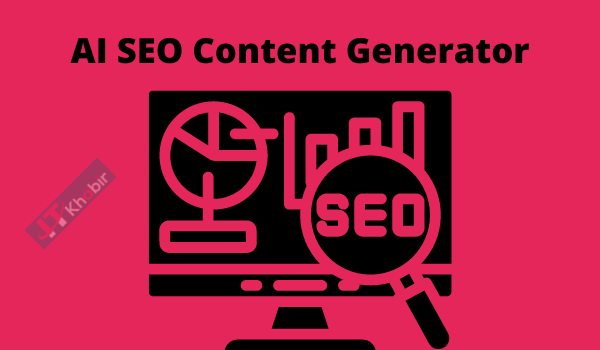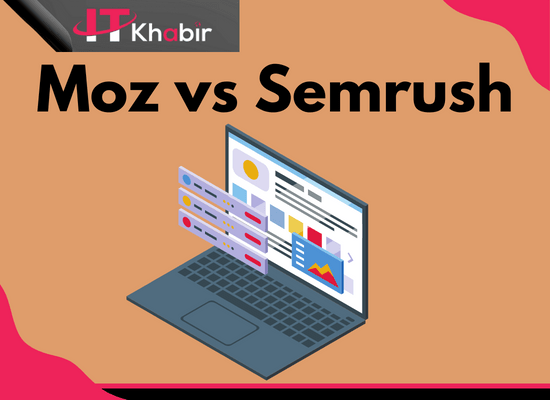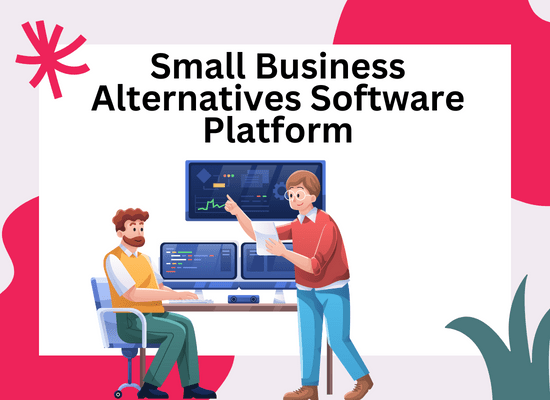There are two main types of blogging platforms: WordPress and Blogger. Both have their pros and cons, but which one is better? It really depends on your needs as a blogger. Here is a comparison of the two platforms to help you decide which one is right for you.
- Watch now AI SEO Content Generator 97% Off
- KingSumo appsumo Lifetime Deal
- linkadd appsumo Lifetime Deal
- Woorise appsumo Lifetime Deal
- LeadLabs appsumo Lifetime Deal
- findmassleads appsumo Lifetime Deal
- LinkHelp appsumo Lifetime Deal
Blogger vs WordPress which is better.
There are two popular platforms for bloggers – WordPress and Blogger. Which is better? It depends on what you need and what you value most. Here are some key differences between the two platforms.
Ease of use: WordPress is more user-friendly than Blogger. With WordPress, you can easily create and format your posts with the click of a button. Blogger requires you to know HTML code to do the same thing.
Flexibility: WordPress is more flexible than Blogger. Thousands of themes and plugins are available for you to pick from using WordPress. Blogger only has a handful of themes and doesn’t offer plugins.
Ownership: WordPress is a more secure platform than Blogger. With WordPress, you own your site and can move it to another host if you want. With Blogger, Google owns your site and can delete it at any time.
Support: WordPress has a larger community of users and developers than Blogger. This means there’s more support available if you need help with your site.
Pricing: WordPress is a more expensive platform than Blogger. You’ll have to pay for hosting and a domain name if you use WordPress. Blogger is free to use.
So, which is better – WordPress or Blogger? It depends on your needs and preferences. If you want a user-friendly platform with lots of flexibility, WordPress is a good choice. If you want a free platform with less support, Blogger might be a better option.
Pros & Cons of WordPress.
There are a lot of reasons to love WordPress. It’s user-friendly, relatively inexpensive, and there’s a huge community of support if you need it. On the other hand, nothing is perfect, and WordPress has its own share of downsides. Here are WordPress’s benefits and drawbacks.
PROS
1. User-Friendly
One of the biggest advantages of WordPress is that it’s extremely user-friendly. Even if you’re not tech savvy, WordPress makes it simple to build stunning websites. There is a ton of documentation and support available if you need help.
2. Flexible
WordPress is also very flexible. You can use it to create any kind of website you want, from a simple blog to a complex e-commerce site. To help you personalize your site, many of themes and plugins are available.
3. Inexpensive
Compared to other website builders, WordPress is quite inexpensive. You can find hosting for as little as $5/month, and there are many free themes and plugins available.
CONS
1. Limited Customization
While WordPress is flexible, there are limits to what you can do without coding skills. If you want to do something outside the box, you may need to hire a developer.
2. Security Risks
Because WordPress is so popular, it’s a prime target for hackers. There have been many high-profile security breaches on WordPress sites in recent years. You need to be extra careful about keeping your site secure.
3. Slow Loading Times
Another downside of WordPress is that it can be slow. This is usually due to poorly configured themes and plugins. If your site takes more than a few seconds to load, you’ll likely lose visitors.
Overall, WordPress is a great platform for building a website. It has its share of drawbacks, but the pros outweigh the cons for most people.
Pros & Cons of Blogger
Since its inception in 1999, Blogger has been a popular way to share one’s thoughts and feelings with the online world. While there are many advantages to using this platform, there are also some potential drawbacks that users should be aware of.
Pros:
1. Blogger is easy to use and does not require any technical knowledge to set up a blog.
2. It is a free service, so anyone can start a blog without spending any money.
3. Blogger offers a wide range of templates and design options, so users can customize their blog to suit their personal style.
4. Users can choose to make their blog public or private, so they can control who has access to their thoughts and musings.
5. Blogger can be a great way to connect with like-minded people from all over the world.
Cons:
1. Because Blogger is owned by Google, some users worry about the privacy of their data.
2. Google has been known to change the terms of service for Blogger without much notice, which can be frustrating for users.
3. Some users find the interface for Blogger to be clunky and outdated.
Overall, Blogger is a great way to share your thoughts and feelings with the online world. While there are some potential drawbacks, the pros outweigh the cons for most users.
How to Start A Blog using the WordPress Platform?
WordPress is a popular blogging platform that allows users to easily create and manage their own blogs. Starting a blog on WordPress is easy and can be done in just a few steps.
1. Choose a WordPress host. WordPress is a self-hosted platform, which means you will need to choose a WordPress host in order to use the platform. There are many WordPress hosts to choose from, but we recommend using a host that offers a managed WordPress platform, such as WP Engine.
2. Choose a domain name. Once you have chosen a WordPress host, you will need to choose a domain name for your blog. Your domain name should be reflective of your blog’s content and theme.
3. Install WordPress. Once you have chosen a domain name, you can install WordPress on your hosting account. Many WordPress hosts offer a one-click install feature, which makes the process of installing WordPress quick and easy.
4. Choose a theme. WordPress comes with a wide variety of themes, which can be used to change the look and feel of your blog. There are both free and premium WordPress themes available.
5. Configure your settings. Once you have installed WordPress and chosen a theme, you will need to configure your blog’s settings. This can be done by going to the WordPress Dashboard and navigating to the Settings section.
6. Write your first blog post. Once you have configured your settings, you are ready to write your first blog post. To do this, simply go to the WordPress Dashboard and click on the Add New link.
Starting a blog on WordPress is easy and can be done in just a few steps. By following the steps outlined above, you can have your own WordPress blog up and running in no time.
How to Start A Blog using the Blogger Platform?
“How to Start a Blog on the Blogger Platform”
Congratulations on deciding to start a blog! A fantastic way to communicate your views, concepts, and experiences to the world is through blogging. And, with the free Blogger platform, it’s easy to get started. In this article, we’ll show you how to create a blog on the Blogger platform step-by-step.
Creating a blog on Blogger is simple and free. Just follow these steps:
1. Go to www.blogger.com and sign in with your Google account. If you don’t have a Google account, you can create one by clicking on the “Create your blog” button.
2. Once you’re signed in, you’ll be taken to the Blogger dashboard. From here, click on the “Create new blog” button.
3. On the next page, you’ll need to enter a name and address for your blog. The name is what will appear as the title of your blog, while the address is the web address (or URL) of your blog. For example, if you enter “My Blog” as the name, your blog’s address will be myblog.blogspot.com.
4. After you’ve entered a name and address for your blog, click on the “Create blog” button.
5. You’ll now be taken to the main interface for your blog. From here, you can start writing posts, customize the appearance of your blog, and more.
We hope this article has helped you learn how to create a blog on the Blogger platform. For more information on blogging, be sure to check out our other articles on the topic.
How to Create A Blog Using Self-Hosted WordPress Platform?
If you’re reading this, then you’re probably considering creating a blog. Congratulations! Having a blog is a great way to share your thoughts and ideas with the world.
And if you’re planning to use the self-hosted version of WordPress, you’ve made an excellent choice. WordPress is the most popular blogging platform on the internet, and self-hosting gives you more control over your blog and its appearance.
Creating a self-hosted WordPress blog is easy, and in this article, we’ll show you how to do it step by step. By the end, you’ll have a fully functioning WordPress blog of your own.
Before we get started, let’s answer a few questions you may have about self-hosting WordPress.
What is self-hosted WordPress?
Self-hosted WordPress is the version of WordPress that you install on your own web server. It’s the most popular way to use WordPress, as it gives you more control over your blog and its appearance.
With self-hosted WordPress, you can choose your own domain name, install plugins, and customize your site to however you like.
Is self-hosted WordPress free?
No, self-hosted WordPress is not free. You’ll need to pay for web hosting and a domain name. However, WordPress itself is free, as are most plugins and themes.
So while you will have some initial costs, you can keep your overall expenses low if you choose your hosting and plugins carefully.
Now that we’ve answered those questions, let’s take a look at how to create a self-hosted WordPress blog.
How to create a self-hosted WordPress blog
1. Choose a web host
The first step in creating a self-hosted WordPress blog is to choose a web host. This is the company that will provide you with space on their server to store your blog.
We recommend using Bluehost. They’re one of the largest and most popular web hosting companies in the world, and they offer a special rate for WordPress.org users.
Plus, they make it easy to set up your blog. We’ll show you how in the next step.
2. Set up your blog
Once you’ve chosen a web host, you’ll need to set up your blog. If you’re using Bluehost, this is easy to do.
First, you’ll need to visit the Bluehost website and sign up for an account. Then, you’ll need to choose a domain name for your blog.
We recommend choosing a domain name that’s related to your blog’s topic. For example, if you’re going to blog about cooking, you could choose a domain name like “cookingtips.com” or “bestrecipes.com.”
Once you’ve chosen a domain name, you’ll need to select your hosting plan. Bluehost offers several different plans, but we recommend choosing the “Plus” plan. It’s their most popular option, and it includes everything you need to get started.
Once you’ve selected your hosting plan, you’ll be asked to enter your billing information. After that, you’ll be able to choose your password and create your account.
3. Install WordPress
Now that you’ve signed up for web hosting and chosen a domain name, it’s time to install WordPress.
Installing WordPress is easy, and most web hosts will offer a one-click install option. If you’re using Bluehost, you can find this option in your control panel.
Once you’ve found the one-click install option, all you need to do is click it and follow the instructions. In most cases, you won’t need to do anything more than click a few buttons.
4. Choose a theme
One of the great things about WordPress is that it’s highly customizable. You can change the way your blog looks by choosing a new theme.
A theme is a collection of files that control the appearance of your blog. WordPress comes with a few default themes, but there are also thousands of themes available from third-party developers.
You can find themes for WordPress by searching the internet or by visiting the WordPress.org themes directory.
When choosing a theme, it’s important to pick one that’s responsive, meaning it will look good on both desktop and mobile devices. It’s also important to choose a theme that’s easy to use and customize.
We recommend using a theme from StudioPress. They offer a wide selection of responsive themes that are easy to use and customize.
5. Customize your blog
Once you’ve installed WordPress and chosen a theme, it’s time to start customizing your blog.
The first thing you’ll want to do is add a title and tagline. You can do this by going to the “Settings” section of your WordPress dashboard and choosing the “General” option.
Next, you’ll want to add some content to your blog. You can do this by creating a new post. To do this, go to the “Posts” section of your WordPress dashboard and click the “Add New” button.
When creating a new post, you’ll need to add a title and some content. You can also add images, videos, and other media. Once you’ve added all your content, be sure to click the “Publish” button.
6. Promote your blog
Once you’ve created a few posts, you’ll want to start promoting your blog. There are a number of ways to do this, but some of the most popular include:
• Social media: Share your blog posts on social media sites like Facebook, Twitter, and LinkedIn.
• Email: Send an email to your friends and family members to let them know about your blog.
• Forums: Share your blog posts on forums and online communities related to your blog’s topic.
• Guest blogging: Write guest posts on other blogs in your niche.
By promoting your blog, you can start to attract readers and build an audience.
7. Make money from your blog
One of the great things about having a self-hosted WordPress blog is that you can make money from it. There are a number of ways to do this, but some of the most popular include:
• Display ads: You can sell advertising space on your blog and earn money every time someone clicks on an ad.
• Affiliate marketing: You can promote products and services as an affiliate and earn commissions on every sale you generate.
• Sponsored posts: You can accept payments to write posts that promote a product or service.
• Products and services: You can sell your own products and services, or those of other companies.
Making money from your blog can take some time, but it’s a great way to generate revenue from your website.
8. Conclusion
Creating a self-hosted WordPress blog is easy, and it’s a great way to share your thoughts and ideas with the world. By following the steps in this article, you can have your own blog up and running in no time.
Which is easier to use Blogger or WordPress?
There are a lot of different blogging platforms out there, and it can be tough to decide which one is right for you. If you’re trying to decide between Blogger and WordPress, here are a few things to consider.
Ease of use: Both Blogger and WordPress are fairly easy to use, but Blogger is probably slightly easier. With WordPress, you’ll need to do a bit more setup before you can start writing, and there are more options to customize your blog.
Features: WordPress has more features than Blogger, but again, it can be a bit overwhelming if you’re just starting out. Blogger has everything you need to get started, and you can always add more features later if you want.
Flexibility: WordPress is more flexible than Blogger, but both platforms allow you to change the look of your blog and add features as you need them.
Cost: Both Blogger and WordPress are free to use, but WordPress does have some paid features.
So, which is better? It really depends on your needs and preferences. If you’re just starting out, Blogger might be the better option. If you’re looking for more features and flexibility, WordPress is a better choice.
Which type blog is best?
There are a lot of different types of blogs out there, so it can be tough to decide which one is right for you. Here are some things to consider when choosing a blog platform:
- 1. What kind of content do you want to publish? If you’re planning on writing mostly text-based posts, a simple platform like WordPress or Blogger will suffice. If you want to include a lot of photos or videos, you’ll need a platform that can handle multimedia content.
- 2. Do you want to monetize your blog? If so, you’ll need a platform that offers features like advertising and e-commerce integration.
- 3. How much control do you want over the design and layout of your blog? If you’re not too worried about customization, a simple platform like WordPress or Blogger will be fine. If you want complete control over the look and feel of your site, you’ll need a platform like self-hosted WordPress or Squarespace.
- 4. How much time are you willing to spend managing your blog? If you want something that’s low-maintenance, a simple platform like WordPress or Blogger will be your best bet. If you’re willing to put in a bit more work, a self-hosted WordPress site will give you more flexibility and control.
ultimately, the best type of blog for you depends on your specific needs and goals. Take some time to think about what you want to accomplish with your blog, and then choose a platform that will help you achieve those objectives.
Blogger vs WordPress which is better: Final Thought
There is no clear winner when it comes to the debate over which is better, the Blogger or WordPress. Both have their pros and cons, and it really depends on what you are looking for in a blogging platform. If you are looking for something simple and easy to use, then Blogger may be the better choice. However, if you are looking for more customization and control over your blog, then WordPress may be the better option. Ultimately, it is up to you to decide which platform is best for your needs.
- Watch now AI SEO Content Generator, Digital product lifetime deal 97% Off

















